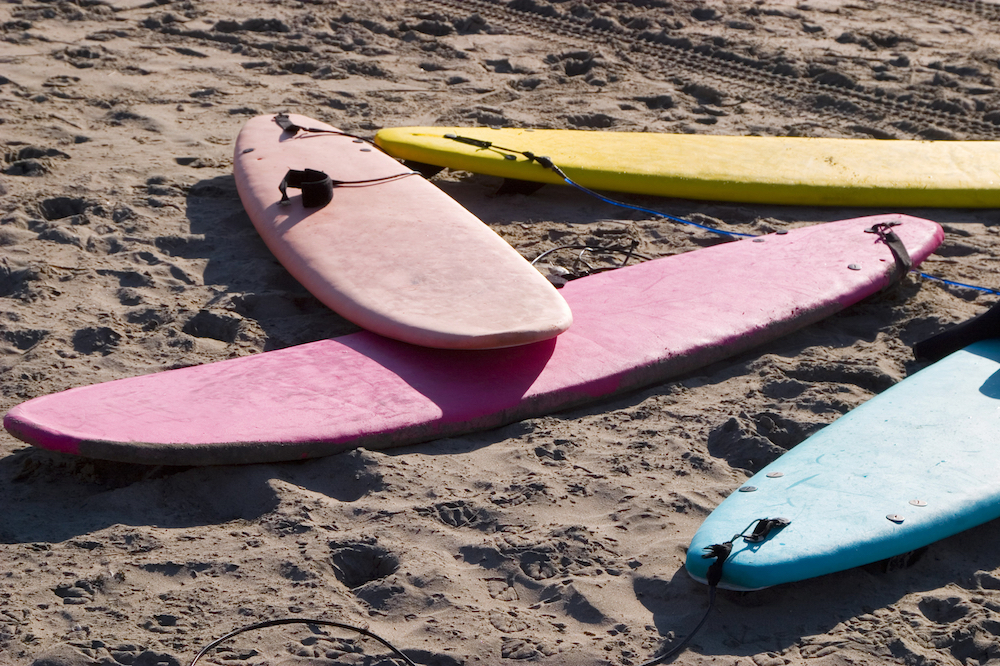In addition to the donning of specific surf safety equipment such as helmets, earplugs and reef boots, you can protect yourself from surfing injuries by ensuring your basic surfing equipment is up to scratch. Surfboards and their various appendages constitute a serious safety hazard in themselves, but there are several simple ways of minimising the danger they pose.
Safe Surfing Equipment: Surfboards

The majority of surfing injuries — 66%, according to one study — occur upon impact with a surfboard. Usually the offending surfboard belongs to the injured party, so it’s in your own interests as well as in everyone else’s to ensure your surfboard’s as safe as possible. When you first start learning to surf you should use a soft-top surfboard or “foamie”, which is still capable of doing a lot of damage, but not quite so much as a standard surfboard with a hard outer layer. Such surfboards often come equipped with flexible rubber fins, which are likewise preferable.
Safe Surfing Equipment: surfboard Fins
Of those surfing injuries inflicted by surfboards, fins are responsible for almost half. Besides the rubber fins that come as standard with most beginner-friendly foam surfboards, Pro Teck Fins made by Surf Co. Hawaii are probably the safest fins on the market, featuring flexible urethane edges that are less likely to leave a deep laceration. They perform slightly differently to normal hard-edged fins — Pro Teck claim they’re conducive to “tighter and more fluid turns, similar to the fins of dolphins and sharks” — but unless you’re an advanced surfer you probably won’t notice the difference.


